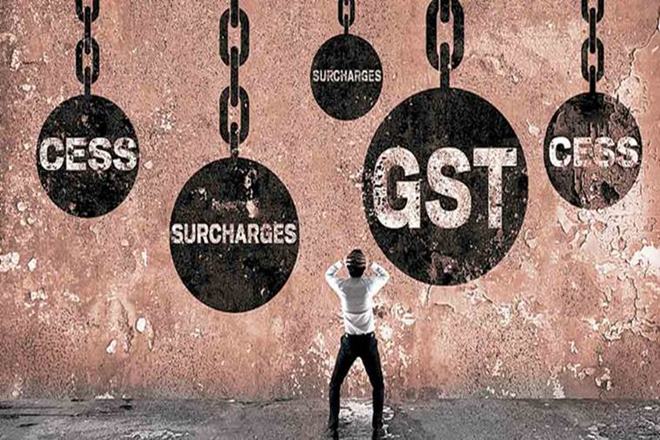GST for telecom sector,how important it is, not to burden it with tax with duties
The Financial Express
By Nilesh Vasa
December 26, 2016 6:13 AM
It is important that the telecom industry is not plagued with excessive taxes and duties.

Tax trigger on the telecommunication sector commenced since the inception of the service tax, way back in 1994.
Pursuant to the Digital India initiative to transform the country into a knowledge economy, the telecom industry is expected to experience further growth, fuelled by increased non-voice revenues and higher penetration in the rural market. There are three segments in which the sector currently operates: (1) telecom service providers—it involves base stations, receivers, etc, which are positioned to create the network enabling transmission of data/voice; (ii) passive infrastructure service providers providing base transceiver station (BTS) cabins, battery banks, etc, used to support the (active infrastructure) telecom service providers; and (iii) telecom equipment manufacturers.
Tax trigger on the telecommunication sector commenced since the inception of the service tax, way back in 1994. While the telecom sector has been a major contributor in indirect tax revenue generation for the government, it is facing various issues on the indirect tax front.
One of the major concerns for telecom service providers is the denial of Cenvat credit on telecom towers. This has resulted in tax cascading, thereby rendering the service uncompetitive. The issue is whether goods constituting the telecom tower qualify as “capital goods” or “input”. While capital goods and inputs have been exhaustively defined under the current provisions of Cenvat Credit Rules, 2004, there is no specific mention on admissibility of Cenvat credit on telecom towers being plant and machinery used for the purpose of business. This has been a subject matter of litigation for long. This is significantly impacting the entire telecom industry as it increases the cost of passive infrastructure.
Divergent views have been expressed by the Appellate Tribunals for different segments of the industry adopting different yardsticks. The Custom Excise & Service Tax Appellate Tribunal (CESTAT) has upheld the denial of credit in respect of telecom towers to telecom service providers (who provide services to the subscribers) on the ground that such towers are immovable property and cannot be regarded as either capital goods or inputs as they are not excisable goods. High Court, while confirming the CESTAT order, has observed that towers and BTS cabins were not directly used for providing telecom services, which is the prerequisite for claiming credit. The issue is currently pending before the Supreme Court and clarity is expected once the appeal is disposed.
On the other hand, CESTATs have taken a favourable view for the telecom infrastructure support service providers by allowing such credit in light of fact that the capital goods, inputs and input services are used for construction and erection of telecom towers, which are, in turn, used for providing output service (to various telecom service providers) under the category of business support services.
To stimulate Digital India campaign, it is important that the telecom industry is not plagued with excessive taxes and duties as it will fetter the spirit of government initiatives. In the revised draft of the model GST law released by the ministry of finance in public domain on November 26, 2016, the policy-makers have taken a major step to eliminate the ambiguity and provide requisite clarity with respect to eligibility of tax credits.
In listing inadmissible input tax credits in respect of various goods and services, plant and machinery has been excluded. Further, vide Explanation 2 to Section 17(4), the term plant and machinery has been defined to include telecommunication towers fixed to earth by foundation or structural support that are used for making outward supply. Section 16 of the model GST law provides the mechanism in which credit of input tax can be availed on telecommunication towers. The credit which can be availed by the supplier of telecom service shall not exceed (1) 33.3% of the total input tax in the financial year in which said goods are received; (2) 66.6% of the total input tax including the credit availed in first year in the immediately succeeding year, and (3) balance of the total in any subsequent financial year.
The challenge of the day has been to search for new cost-effective ways to roll out telecom services in rural India. There is a great untapped potential in the rural market for telecom companies. In order to achieve the desired goal of expanding the telecom business and accomplishing socio-economic development, it is essential that the cost of the telecom service provider goes down, which will result in lower tariff rates and broader consumer base. Considering an overall objective, the proposed GST framework seems to have addressed the concerns of the telecom sector.
The seamless flow of credit under the GST regime will help reduce the overall cost and eventually the benefit can be passed on to the end-user by lowering tariff rates. There would be pertinent increase in free cash flow which can be used in business development opportunities and innovations to support the Digital India initiative. The telecom sector is vibrant, price-sensitive and has a high growth potential. Strong policy support from the government is crucial for overall development.
The author is executive director, Tax & Regulatory Services, EY India.